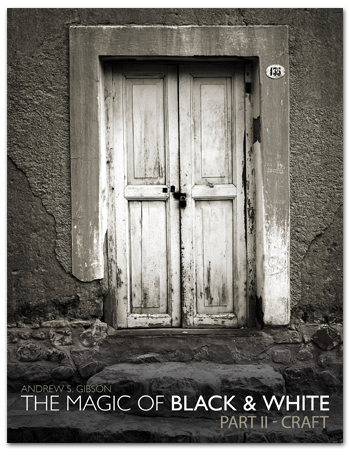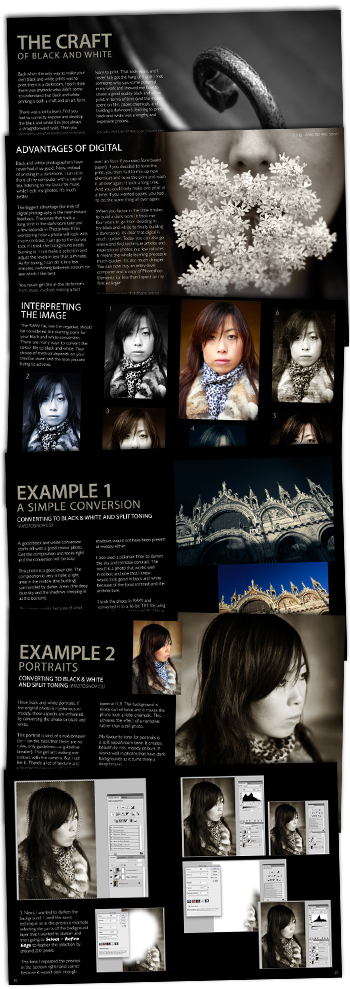A lot of the most stark and emotive photographic images you will ever see are done in black and white. The black and white collections we have put together here at Light Stalking remain some of the most popular on this site of all time. Little wonder then that many folks continually seek out how to improve their own skills at black and white photography and emulate some of its better practitioners.
We were excited to find out then that one of our favorite photography websites has just launched a new guide to black and white photography – The Magic of Black and White (Part II – Craft) by Andrew S Gibson – a follow up to the successful first part (Vision).
Who Made the Guide?
This guide (and the previous one in the series) are published by David DuChemin who many of you might already be familiar with – he runs the fine website at www.CraftAndVision.com and publishes many great guides to photography as well as a very cool blog.
The author, Andrew S Gibson is no slouch himself (check out the images below to see what we mean). He also writers for EOS Magazine and has been in a bunch of other photography publications you probably know (Practical Photography and Photoshop Creative to name a couple).
So What's It All About?
David was kind enough to give us a sneak preview of this follow up guide. To be honest, he set such a high standard with his other books, that we were expecting a lot.
The first thing that is striking about The Magic of Black and White is its visual appeal. Like all Craft And Vision publications, it is absolutely gorgeous to look at – this time due to the fantastic photographic skills of Gibson. Check it out:
The guide itself has three main messages (with great examples) on how to achieve various aspects of producing a stunning image in black and white. The focus of this one is the actual technical craft (making it the logical follow up to the first guide which was about vision).
Conversion – Several Techniques for taking a basic digital image and converting it to black and white properly. Remember though, as the guide states, you still need a decent color photo to get a decent black and white conversion!
Toning – Various methods of toning including a detailed look at split toning which involves adding two colors rather than one as in sepia toning.
Textures – Gibson shares a very cool technique (albeit relatively popular) for adding textures to photos by combining a texture layer into the black and white image. The resulting examples are quire stunning.
The guide goes into enough detail on each point (with specific software settings for Photoshop and Elements which are relatively easy to emulate in most photography software) that it can practically be used to emulate the results of the photo examples. That makes it solid basis for folks looking to learn the craft.
As with most Craft and Vision published guides, perhaps the main criticism is that it leaves you wanting more and asking when the next one is coming out. The guide itself is great – we just want more of it! The eye candy is spectacular and the lessons are solid.
But that is the kicker. These short guides solve a specific problem for many photographers and they do it succinctly and well. With them being priced at an incredibly cheap $5 it's difficult to not want to snap up all of them.
The Magic of Black and White – Part II – Craft is well worth a look and at these prices, very difficult to ignore.
And, as David has kindly informed us:
For the first few days only, if buyers use the promotional code MAGIC4 when they checkout, they can have the latest ebook for only $4 OR they can use the code MAGIC20 to get 20% off when they buy 5 or more books from the Craft & Vision collection. These codes expire at 11:59pm PST June 1, 2010.
Check it out by Clicking here.
David has kindly agreed to share the proceeds of any sales via this site with Light Stalking so we can continue to bring you great photography content.








